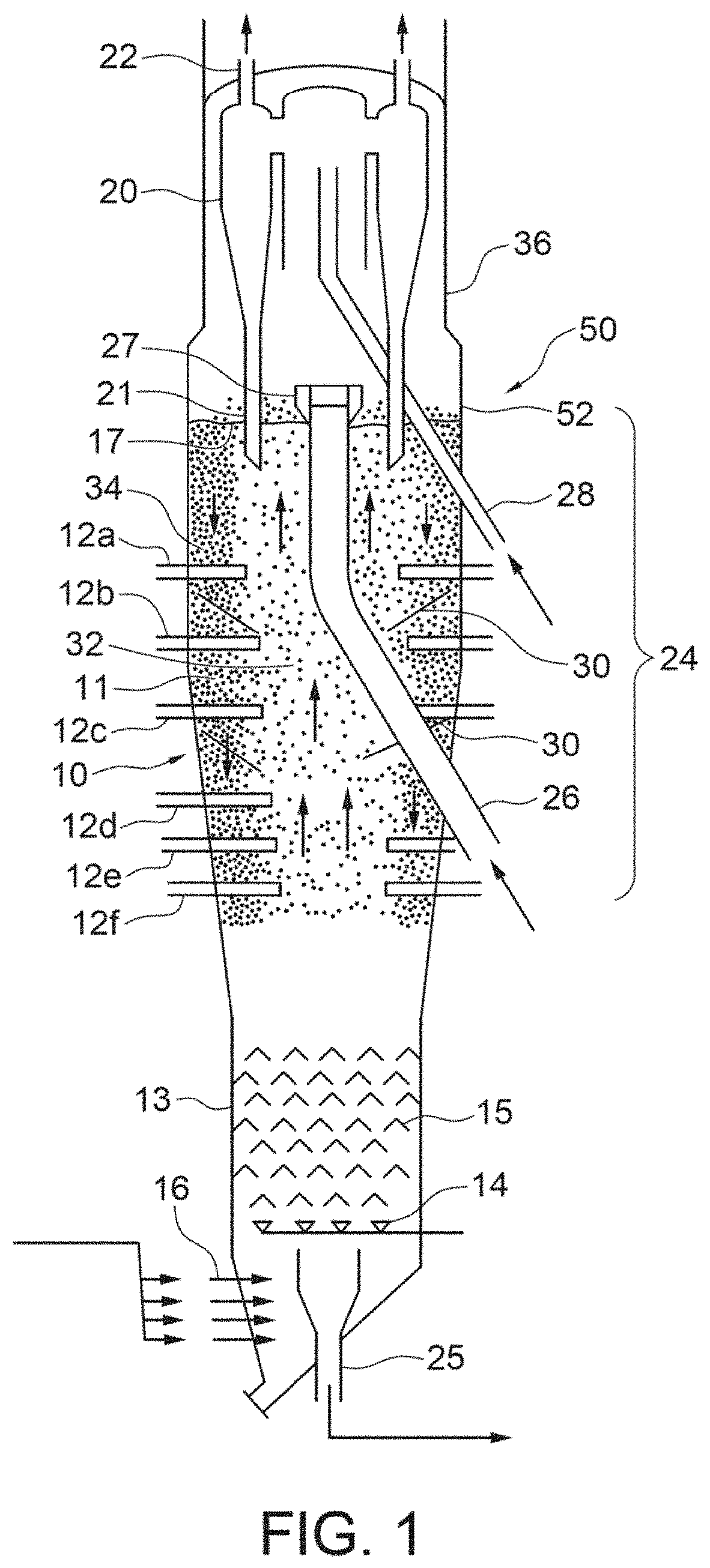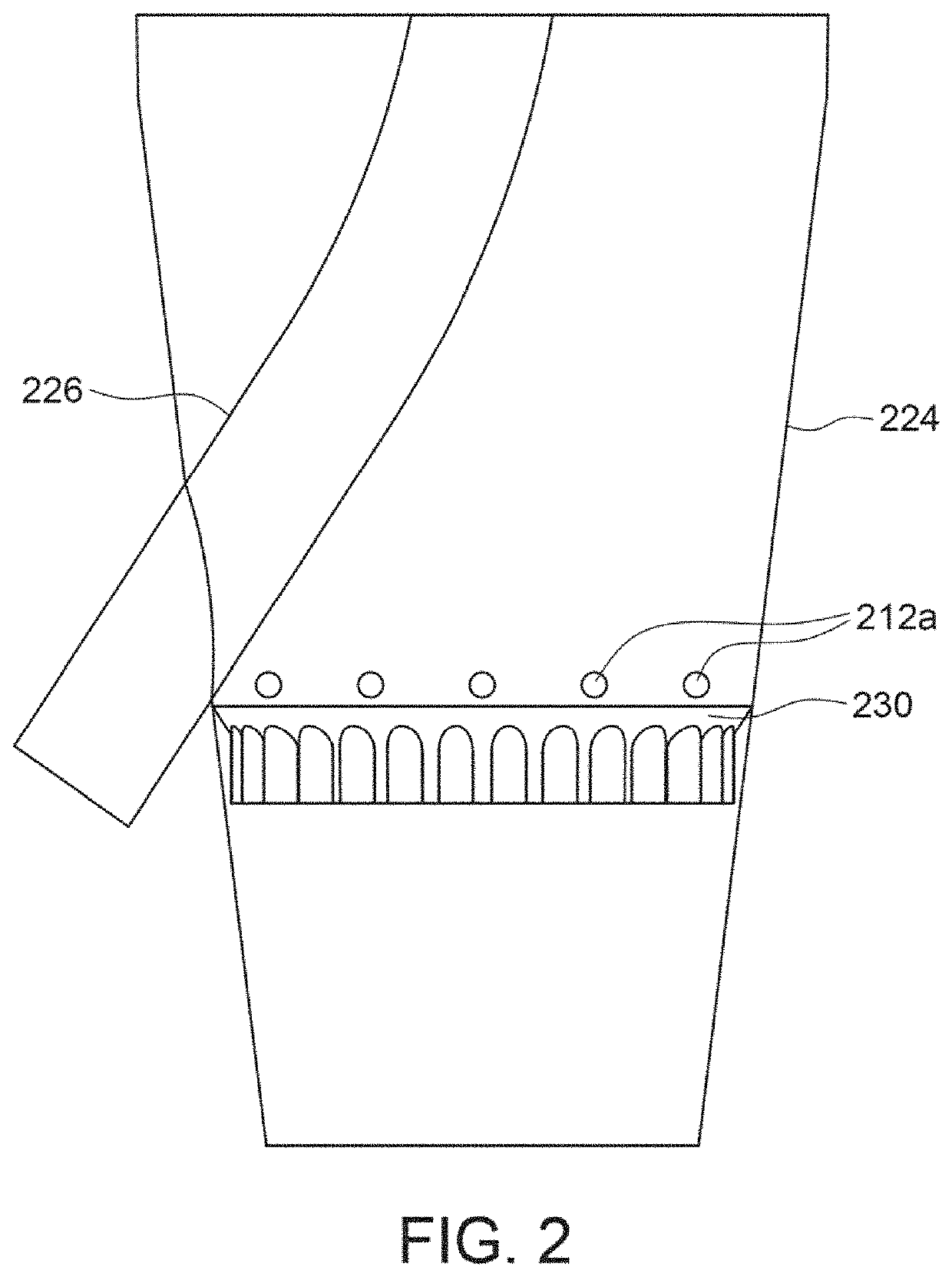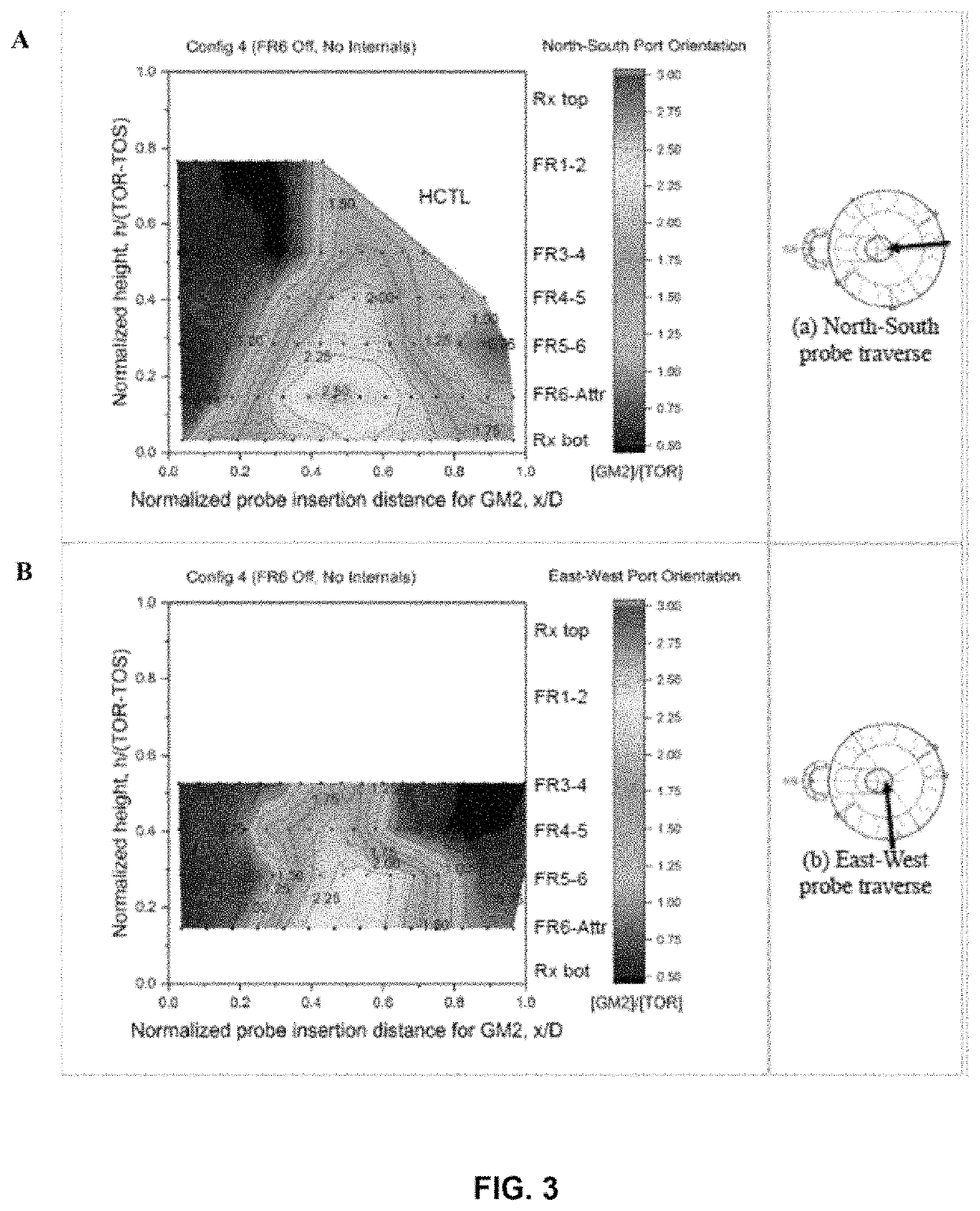Liquid yield from fluid coking reactors
a technology of fluid coking reactor and liquid yield, which is applied in the direction of chemistry apparatus and processes, thermal non-catalytic cracking, chemical/physical processes, etc., can solve the problem of liquid refluxing to make more coke, and achieve the effect of reducing coke yield, long residence time, and improving liquid yield
- Summary
- Abstract
- Description
- Claims
- Application Information
AI Technical Summary
Benefits of technology
Problems solved by technology
Method used
Image
Examples
example 1
[0034]A 1 / 19th scaled commercial coker cold flow model was used to demonstrate that solids in a reactor generate a distinct core-annular flow structure. This was accomplished by inserting the feed nozzles (simulated by air jets) such that their maximum jet penetration reached the centerline (r=0) of the fluidized bed. The result was no measurable change in vapour residence time and significant increase in solids residence time in the reactor model. The slower moving solids suggest a more distinct core-annular flow structure. No change in the model vapour phase residence time is reasonable, since the vapour phase already rises quickly.
[0035]Experiments conducted with respect to feed-solids contact also supports injecting feed liquid into the core-annular flow structure. Liquid injection into a solids mixing regime representing the core region was vastly improved compared to the same injection done into a regime representing the annulus region. Surprisingly, the poor reaction performa...
example 2
[0037]Experiments were performed using the 1 / 9th scaled commercial coker cold flow model and using helium as a steam tracer in the coker reactor section. Four different parameters were studied: Parameter 1 is where the nominal feed nozzles are positioned (i.e., extended) as currently used in commercial fluid cokers (the base case); Parameter 2 is where the nominal feed nozzles are extended to the core of the reactor; Parameter 3 is where the nominal feed nozzles are extended to the core of the reactor and one wall baffle is added; and Parameter 4 is where the nominal feed nozzles are extended to the core of the reactor and two wall baffles are added. As in applicant's commercial cokers, six (6) feed rings were used, each feed ring having a number of feed nozzles ranging from twelve (12) to eighteen (18).
[0038]Table 1 below compares the length of nozzles in the 1 / 9th scale commercial coker for the base case, i.e., the position of nozzle tips in commercial operations (Parameter 1), an...
PUM
| Property | Measurement | Unit |
|---|---|---|
| angle | aaaaa | aaaaa |
| angle | aaaaa | aaaaa |
| temperatures | aaaaa | aaaaa |
Abstract
Description
Claims
Application Information
 Login to View More
Login to View More - R&D
- Intellectual Property
- Life Sciences
- Materials
- Tech Scout
- Unparalleled Data Quality
- Higher Quality Content
- 60% Fewer Hallucinations
Browse by: Latest US Patents, China's latest patents, Technical Efficacy Thesaurus, Application Domain, Technology Topic, Popular Technical Reports.
© 2025 PatSnap. All rights reserved.Legal|Privacy policy|Modern Slavery Act Transparency Statement|Sitemap|About US| Contact US: help@patsnap.com



